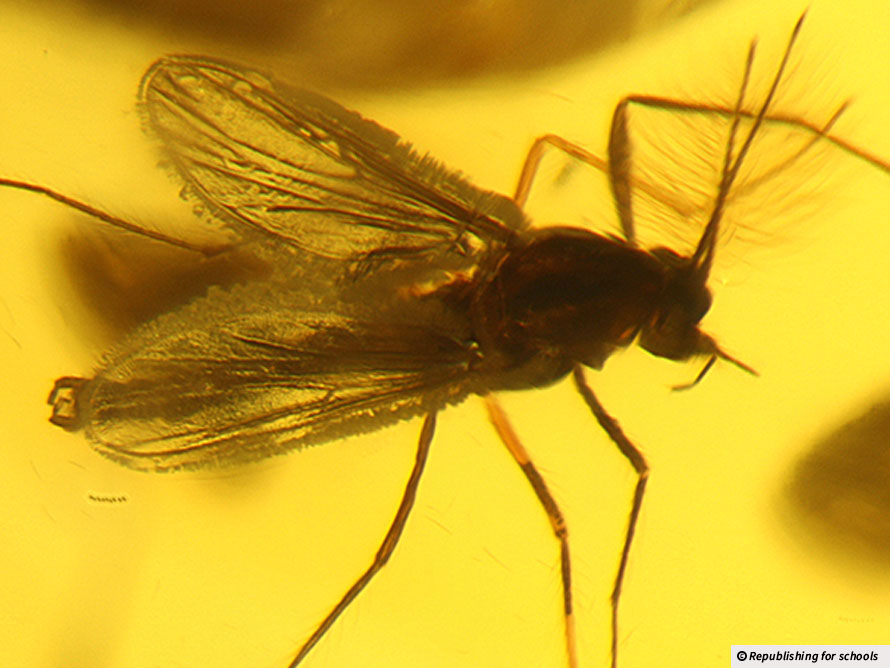Could Jurassic Park actually happen? The discovery of two mosquitoes preserved in amber for millions of years has raised hopes of recreating long-extinct species.
Fossil mosquito prompts dreams of dinosaurs
 Gold storage: The mosquitoes are a new species, adding to the 3,600 already known.
Gold storage: The mosquitoes are a new species, adding to the 3,600 already known. Glossary
Amber - Fossilised resin - which is the viscous (thick, sticky) liquid inside a tree that protects it from external threats. Amber has been appreciated for its colour and natural beauty since Neolithic times.
Premise - Set-up. The basis from which a story begins.
DNA - Deoxyribonucleic acid is the material in an organism that carries genetic information.
Early Cretaceous - The Early Cretaceous Epoch lasted from 145 million years ago to 100.5 million years ago.
Jurassic - The geological period between 200 and 145 million years ago when dinosaurs diversified and became the dominant land animals.
Genome - The complete set of genes in an organism.
Permafrost - Any ground that remains completely frozen for at least two years. Permafrost covers large regions of the Earth.
